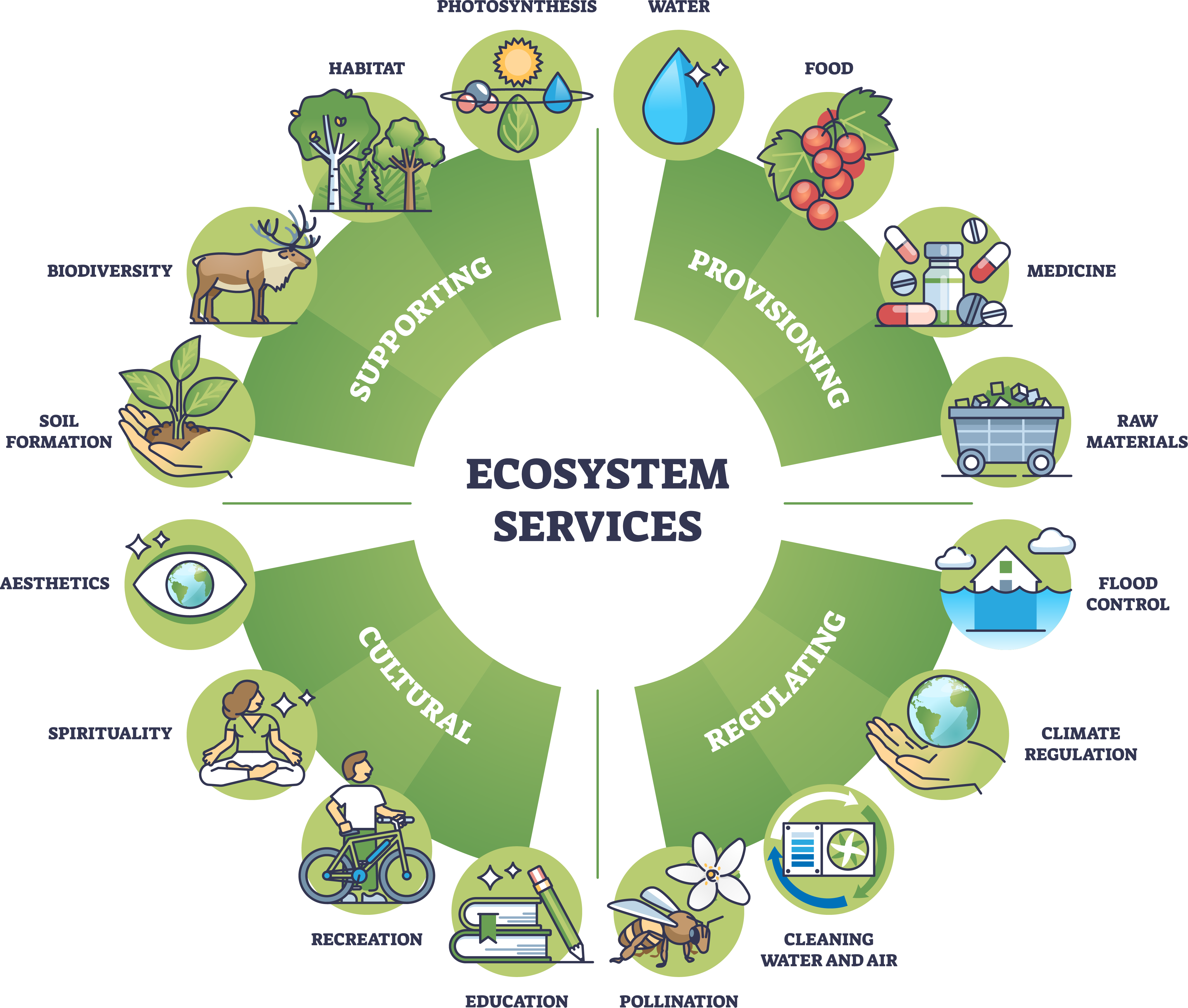Healthy ecosystems are essential for everything people and other organisms need to live. These life support systems are referred to as “ecosystem services.”

Healthy ecosystems are essential for everything people and other organisms need to live. These life support systems are referred to as “ecosystem services.”

What happens when ecosystems experience enough disruption to no longer be in balance? When ecosystems are unhealthy, it can and does affect the services that they provide. This can have significant impacts.
For example, if a lake that supports a thriving community of aquatic algae, plants, insects, fish, amphibians, birds, and mammals is contaminated with pesticides and phosphates from synthetic fertilizers, the lake can buffer these exposures until it reaches a tipping point and flips into eutrophication and an algal bloom that can collapse its entire food web. All the benefits that this lake provided to wildlife, for carbon storage, water purification, recreation, etc. are gone. Once an ecosystem transitions to a degraded and non-functioning state, it can be very difficult to restore it.
Not all impacts to ecosystems are as drastic as lake eutrophication. Alterations in populations of an ecosystem's organisms can change its composition making it more hospitable to species of mosquitoes that can carry disease, and less hospital to the dragonflies, predacious beetles and other animals that keep the problem mosquito populations in check. The city uses ecosystem management principles in the mosquito program to lower mosquito populations, particularly those that have the potential to transmit West Nile virus. This approach provides many other benefits by enhancing wetland ecosystem health.
Boulder’s mosquito management program is unique — and it’s working. Learn how and find more details on the City's Ecological Mosquito Management webpage. Find out how to keep yourself and our community safe from West Nile virus.
A major factor that impacts ecosystem health and our own health is toxic chemicals. This can be indirect - such as fossil fuel combustion leading to climate change that harms overall ecosystem health from increasing heat and extreme weather events. But direct chemical contamination is also harming ecosystems. This can be caused by direct harm to an individual organism or to other organisms that are reliant on another species as a food source, shelter, etc.
Although we can’t avoid all the toxic substances that we are exposed to, we can take action to reduce the exposures we encounter in our daily lives. Visit the Environmental Contaminants & Toxics webpage to learn how to decrease your exposure to toxic chemicals.